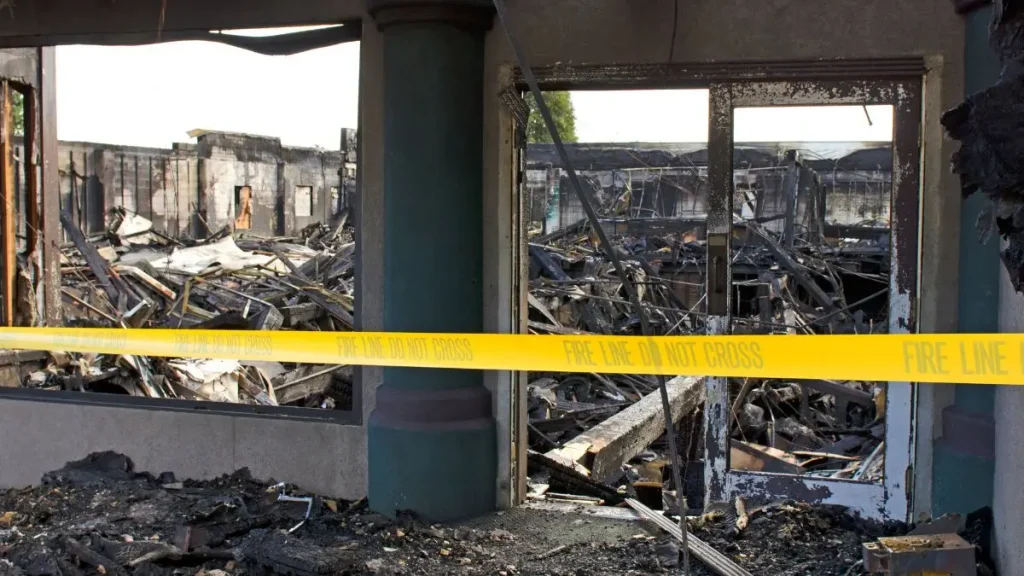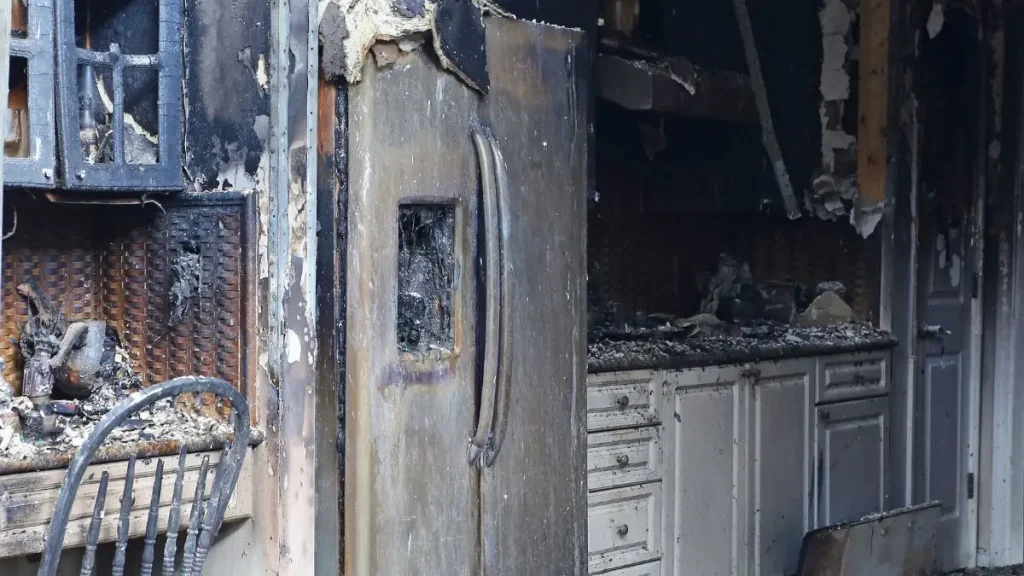2 Teens and 1 Man Die in Devastating Wake County House Fire
When I first heard the news, it didn’t sound real—two teenagers and a man killed in a house fire, right here in Wake County. You never expect something like this to happen so close to home.
It was around 9:30 in the morning, in a quiet part of southern Wake County—Rand Road near Ten Ten. First responders got the call and rushed to the scene within minutes. By the time they arrived, flames had already torn through most of the house.
Inside, they found three people: a 49-year-old man named Shannon Collins, and two young teenagers—just 13 and 15. None of them made it out alive. Even two of the family’s cats were found dead inside.
There was no storm. No downed power lines. Just a calm, sweltering summer morning that ended in a nightmare.
And if you’re wondering, “Was there anything that could’ve saved them?”—you’re not alone. That question is still hanging heavy over the whole neighborhood.
First Responders & Heat Conditions
When you read “first responders arrived in under five minutes,” it’s not just a statistic—it means they dropped what they were doing and raced into one of the worst nightmares you can imagine.
According to WNCT, crews got the call at 9:38 a.m. and were on-site almost immediately. That kind of responsiveness gives you a moment of relief—but also gives you chills when you realize how intense the situation must’ve been behind closed doors.
I want you to imagine the scene: it’s nearly 100 °F, blazing sun, thick smoke, and responders decked out in 50–100 lbs of gear. Heat exhaustion isn’t just possible—it’s expected. But crews didn’t stop. They worked in short bursts, rotating in and out with hydration and shade, exactly how Cary and Morrisville fire teams do during heat waves.
If you’ve ever felt drained just walking outside on a hot day, multiply that by hundreds for someone wearing breathing apparatus and bunker gear. It’s a sobering reminder—you and I rely on these people stepping into danger when most of us steer clear of it.
Firefighters facing both flames and extreme temperatures is sadly becoming more common. See how crews in West Philadelphia battled intense heat during a major fire.
Investigation Details & Suspicion Angles

I read the CBS17 report closely, and here’s what stands out: while fire investigators from Wake County, SBI, ATF, and State Fire Marshal are working the case, they’ve kept cause undisclosed so far.
Now, you and I both know “cause under investigation” is a polite phrase. But there are hints: neighbors mentioned prior law enforcement visits for domestic violence—questions are being raised. CBS17 also reported someone saying, “Something didn’t feel right”—that’s more than just randomness.
I think you’ll agree—that’s a serious red flag. When a blaze kills three people in daylight, infos like this become the thread you pull to figure out “was this just a bad accident?” or “was there more behind the smoke and flames?”
Your instinct is probably the same as mine: we want clarity, not just updates. And by highlighting those concerns early, we set the tone for deeper investigation—not just relaying official statements.
Victim Profiles & Community Reaction
You feel it when I say their names—Shannon Collins, 49, and the two teens, just kids. CBS17 and others refrain from naming the teens, out of respect. But when neighbors describe Collins as someone working in the yard yesterday, it hits close: this was a real family, a normal morning, now shattered.
You’ve probably seen local Facebook groups blow up after events like this—messages of shock, grief, disbelief. That communal emotion isn’t just noise; it mirrors your own gut reaction.
So I want you to hold that thought: this isn’t just news—it’s loss, right under our noses.
In many cases, families lose not just loved ones but their entire home in minutes. Read how a Santa Clara County house fire left 3 people suddenly displaced.
Possible Causes & Expert Fire‑Science Insight
You’ve likely heard that house fires in daytime are often linked to electrical faults, cooking accidents, or even intentional acts. What I’d add is this: without knowing cause, the best we can do is lay out plausible scenarios, backed by data from NFPA or Fire Marshal statements.
Think about it: if it was electrical, recent storms or power surges matter. If kitchen-related, was anyone cooking at 9:30 a.m.? If arson is in play, what local DV or criminal data informs that speculation?
My job? Frame it responsibly—let you, the reader, weigh the possibilities without sensationalizing them. And that helps you understand why the investigation is still unfolding, not rushing to declare a cause prematurely.
Electrical issues, structural layout, and building type often affect how a fire spreads.
A 3-alarm blaze in Newtown Square recently damaged multiple connected townhomes—a sharp reminder of how quickly fire moves.
Heat & Health: The Hidden Risk Factor
Here’s something you might not connect immediately: summer heat isn’t just an environmental backdrop—it’s an accelerant. When it hits near 100 °F, everything catches fire faster, smoke density increases, and people’s reaction time slows.
Add firefighters working in bunker gear—that could be drowning in your own sweat, let alone fighting flames. And public services? They’re stretched thin: Wake County opened cooling stations after the fire to combat the heat wave.
I want you to picture this: your AC goes out for a day, you’d feel miserable. Now imagine responding to a house fire with no AC, no breathability, and body temperature skyrocketing. That’s what firefighters were managing—every second on scene was a race not just to save lives, but to survive themselves.
What Happens Next — Investigation Timeline & Community Support

When something like this happens, you and I naturally ask: “Now what?” Unfortunately, official updates don’t move at the pace we hope for. Right now, investigators are waiting on results from the Chief Medical Examiner, and a formal cause of fire is still pending.
But that doesn’t mean you’re helpless.
If you live nearby, this is a good time to check on your neighbors, especially anyone elderly or alone. Tragedies ripple quietly—sometimes grief hits hardest in the silence that follows. Local churches and community groups are already organizing support efforts. I’d suggest keeping an eye on Wake County’s official social media or your Nextdoor feed for verified fundraisers or donation drives and join local social media groups like Facebook groups and WhatsApp groups.
And if you’ve ever thought about donating to your local fire department—this is the moment.
What You Can Learn From This — Real Safety Takeaways
Let’s be real—tragedies like this can feel overwhelming. But you and I can still do something. Start with your own home:
- Check your smoke detectors (and not just if the light is blinking).
- Have a fire escape plan—especially if you’ve got kids.
- Know your exits and keep them uncluttered.
- Document domestic incidents if they’re happening around you—and report them.
You don’t need to panic, but you do need to prepare. Fires don’t send invitations—they just show up. What you do now decides how things play out later.
Final Word
You and I both know how stories like this usually fade. A few news cycles, a social media post, then silence. But this shouldn’t fade.
This was a family. This was avoidable. And this should stay with us—not just as a headline, but as a reminder.
So here’s my ask to you:
What will you do differently tonight?
Will you check on someone? Replace batteries? Ask a hard question that might save a life?
Drop your thoughts below. Because when we share real stories, we help protect real lives.
Stories like this highlight how fire tragedies often have deeper roots. Read more real stories that reveal what’s often missed → Visit our home incident section.
Disclaimer: The details in this article are based on publicly available reports and ongoing investigations. Some facts may change as authorities release new information. This content is intended for awareness and public safety only.


